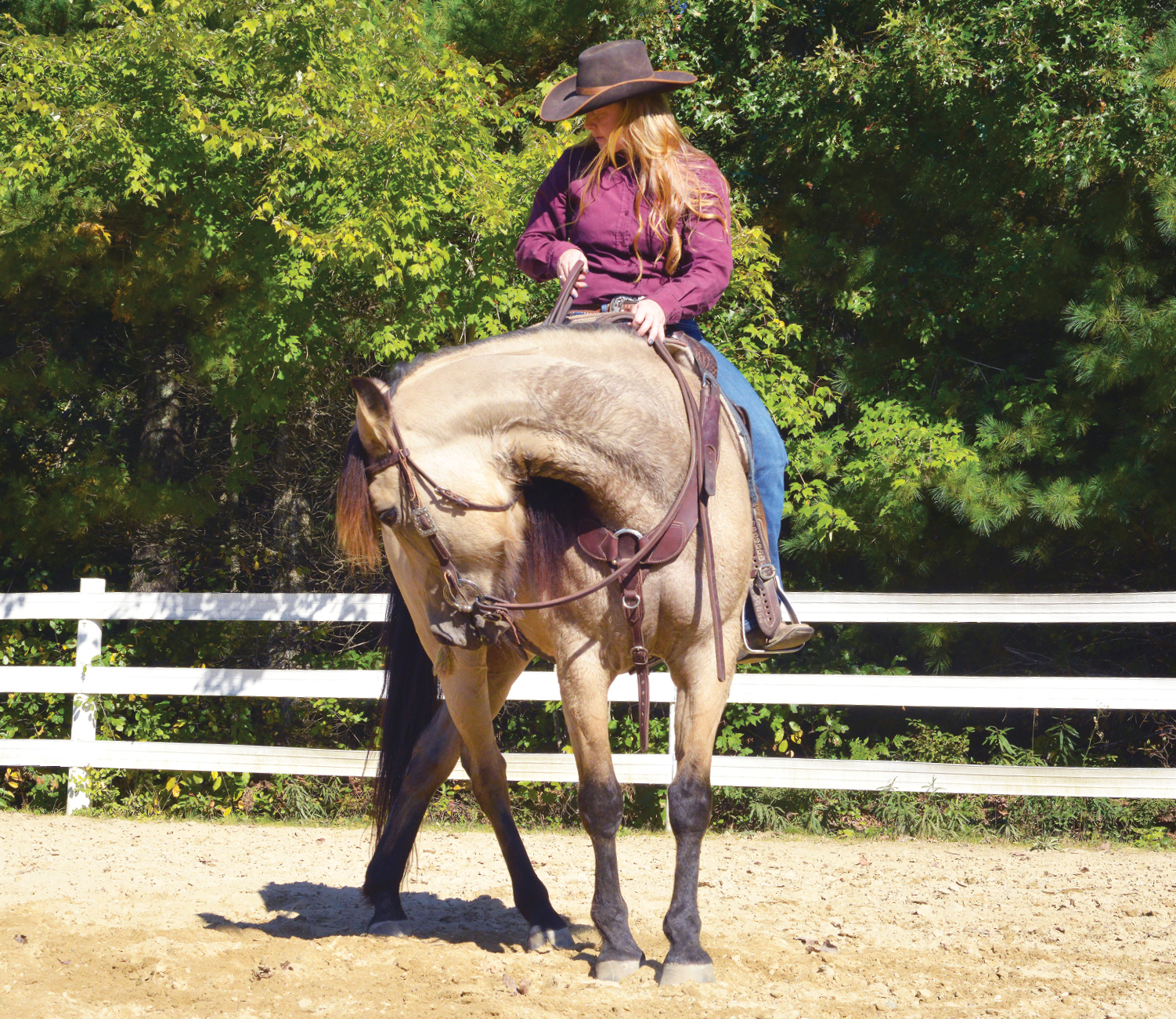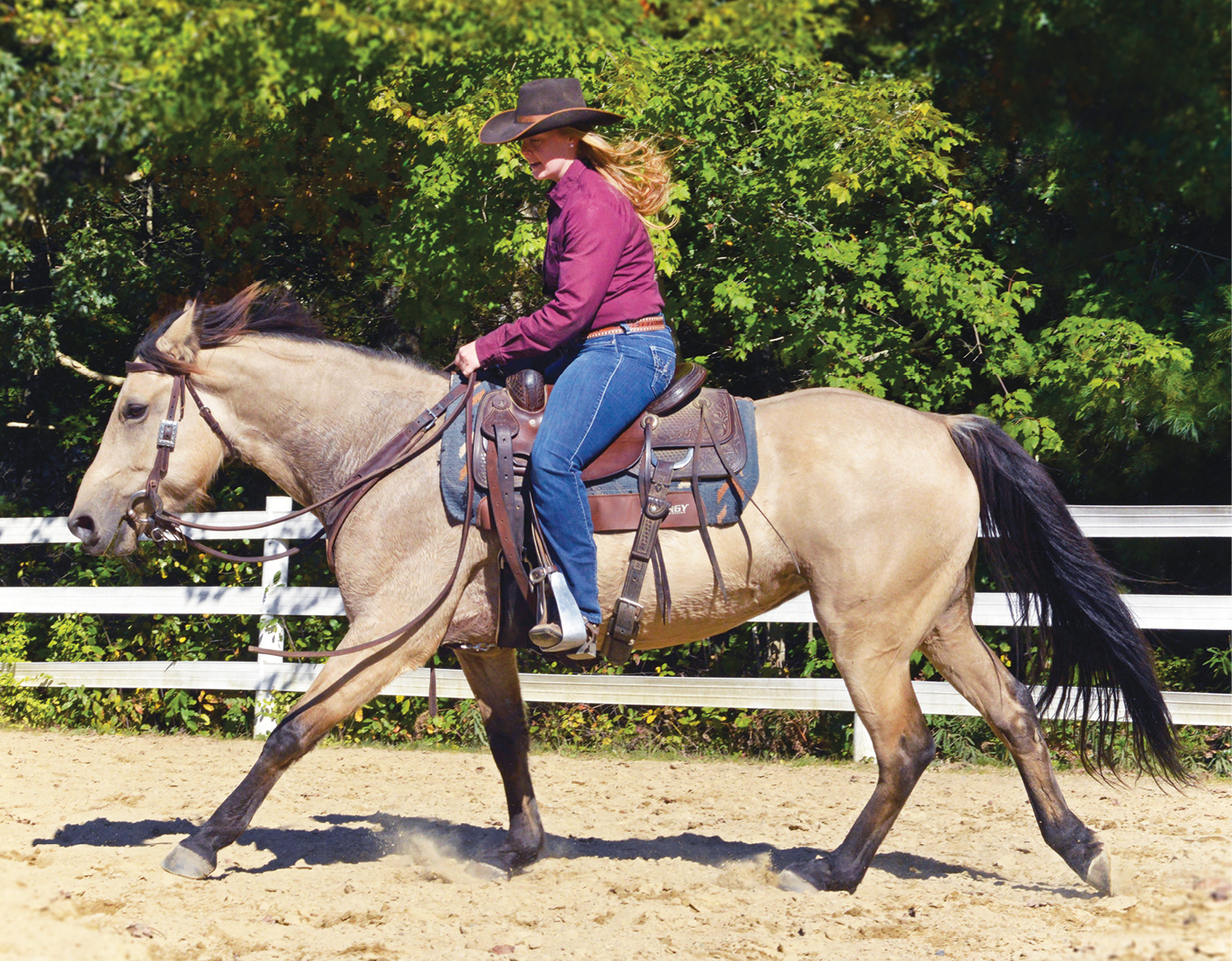Loping is one of the hardest gaits for riders to master, and if you’re practicing without balance or control, it can become very overwhelming and put you in a dangerous situation. It might even create fear around loping your horse. When you aren’t in control of your speed, your horse will continue to get faster, and things might begin to spiral out of control. Rather than throwing yourself into a lope and hoping everything goes smoothly, use this exercise to gain confidence at the lope while keeping your horse at the pace you choose.
Disengage the Lope
The purpose of this exercise is to take the fear out of the word lope and allow you to be comfortable as you increase your speed. It’ll help you and your horse learn how to build in speed, but in a controlled manner.
Think of it as adding an emergency-stop button to your horse that you can use if your regular brakes stop working.
It’s best to start off in a controlled environment, like an arena or a round pen, so there are fewer variables to worry about. You should also be comfortable riding at an extended trot before attempting this drill.

Step 1: Set Him Up
Start at an extended trot, with a relaxed rein that still allows you to connect with your horse if you need to go to your hand. Once you have a comfortable pace going, sit down and slowly bend your horse’s nose to the inside so that you can slightly see the outside of his eye. This allows him to soften his neck and be in the proper position to lope. You should have enough contact with your horse’s mouth that he can feel your cues, but not enough that he’s overwhelmed. If he begins to rush or anticipate, go back to your regular long trot, and then ask for that cue once again.
Step 2: Stop Him
Once you can bend your horse’s head to the inside, it’s time to ask for the stop.
As you trot around, your seat should be in rhythm with your horse’s footfall. When it comes time to stop, sit deep in your seat and release your legs away from your horse to help reinforce the stop cue.
As you ask for the stop, keep your horse’s head bent to the inside and use equal pressure with both reins to signal it’s time to stop. Keeping him in this position through the stop transition teaches him to stay collected and lets him know that you’re in control.
Continue this until you’re able to collect your horse at the trot and can ask for a quiet, controlled stop.
Step 3: Push Into the Lope
When you’re ready, speed up your trot and once again slightly bend your horse’s head to the inside. Keep your horse’s head bent to the inside and ask him to lope off. If he tries to get away from you and his face breaks free of your inside bend, use your seat and go to your hand to bring him to a stop. Go back to Step 1 until he softens in his face, and then repeat this portion of the drill until your horse is loping at a controlled pace that you choose.

Step 4: Keep It Going
Continue to lope at your controlled pace for 1 to 2 minutes. Look up, put your heels down, relax, and ride. When you’re happy with your horse’s speed and behavior, ask for a stop. Pick up on your reins, keeping his head bent to the inside, sit deep in your saddle, release your legs, and ask for the stop.
Once you master these steps, you should feel much more confident at the lope. As you gain confidence in the saddle, continue to add pace to your lope until you can successfully ride your horse at an extended lope.
You can also put your skills to the test outside of the arena. Just remember, as soon as you feel like you’re tensing up or losing control, hit that emergency brake or disengage the lope on your terms and work your way back up.







